You can see
Part 1,
Part 2,
Part 3 and
Part 4 here.
Carl and I slept in late this day, skipping breakfast. We woke up around 10 or 11 to a text or snapchat from Brian of a boa found in the rafters of the cafeteria. It was gone by lunch sadly. I have still yet to see a live boa in my Costa Rica trips. I hoped the pic had survived but it seems to have disappeared like the boa.
We joined Bri for lunch, and went on a short hike in the pouring rain that afternoon. I think we kept our cameras in our dry bags and didn't see much of anything.
After dinner, the rain had let up a bit. We set out for the night, serenaded by the calls of Fleischmann's Glass Frogs Hyalinobatrachium fleischmanni. They could be heard calling almost every night from high up in the canopy, but were never low enough for us to see. A few Teratohyla pulverata were also calling, but we usually could only find one or two if lucky. A few new egg masses were again seen.
Our first herp of the night was this toad. I believe it is a Wet Forest Toad Incilius melanochlorus, but may just be an odd looking Cane Toad Rhinella marina.
We saw some of the now usual subjects while hiking - Craugastor bransfordii, Lithobates warschewitzii. We also saw a few frogs with large heads. The males are pretty common throughout La Selva, and do have big heads. A female would be a true joy to find on this trip. They can be giant frogs, as Craugastors go that is.
 |
| One of my favorite Craugastors - the Broad-headed Rain Frog Craugastor megacephalus |
This night we searched a different glass frog stream, in a different part of the reserve. The first stream we had been hunting previous nights was barely a trickle. This stream had deep water in areas and had some current. Upon arriving, the glass frogs were already calling.
Stream Anoles
Norops oxylophus were often noted to be sleeping in overhanging branches along this stream.
And evidence of previous glass frog romance were often found.
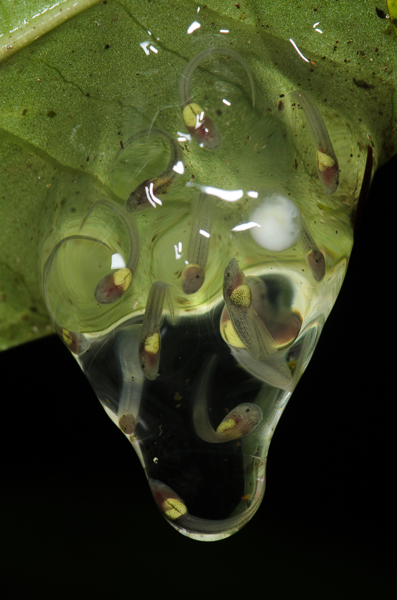 |
| I think these are T. spinosa eggs, laid on the underside of the leaf. |
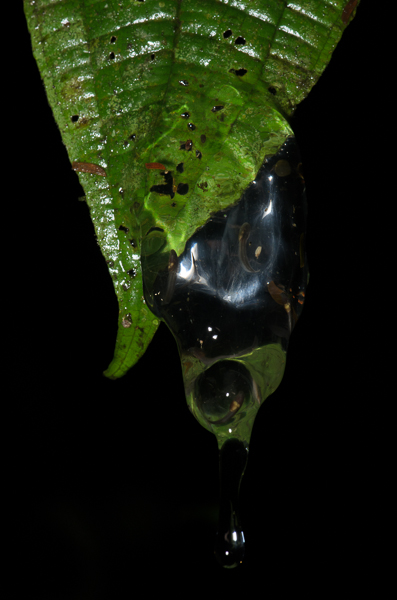 |
| I think these are E. prosoblepon eggs as they are laid on the top of the leaf. |
Of course, the
E. prosoblepon were again out too.
Dreaded bullett ants were all over everything, every day, all the time. No one was shot.
After finishing the stream transect, Brian was pretty tired, and decided to mostly book it back home. Carl and I took a more leisurely route back, hoping to turn up a snake or two. We did.
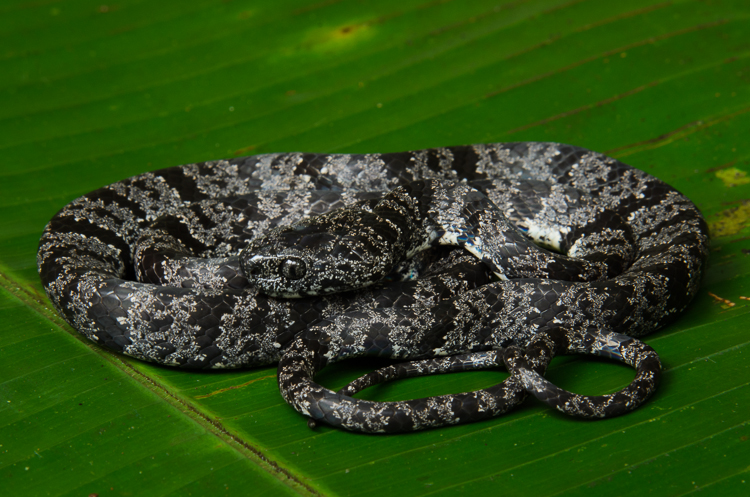 |
Clouded Snail-sucker Sibon nebulatus
This was found crossing the trail, and briefly repositioned for photos. |
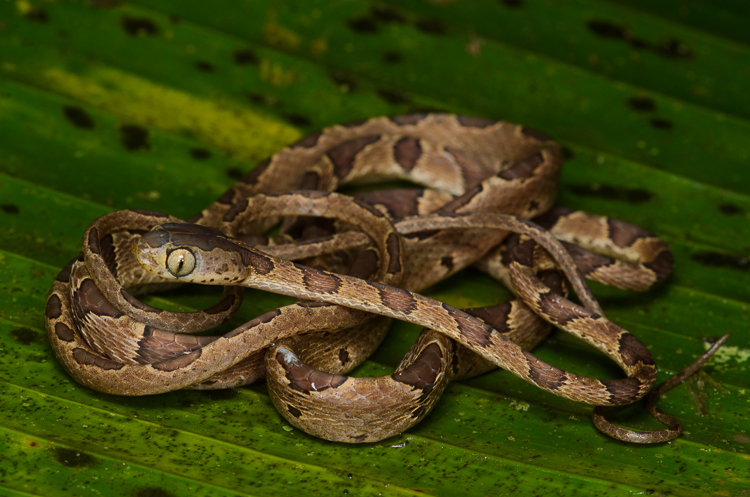 |
| Blunthead Tree Snake Imantodes cenchoa |
Searching a swamp while half asleep turned up Olive Snouted Treefrogs
Scinax elaeochrous and Hourglass Treefrogs
Dendropsophus ebracattus.
The next day we decided to change locations slightly. Brian had developed a relationship with
Chilamate Rainforest Eco Retreat. We decided to head over there and spend a few hours hiking around on their trail system and try to explore the amphibian and reptile diversity. In a few short daytime hours we documented 8 frog and toads, as well as 4 lizards. Nothing new, but it was fun to explore some new trails.
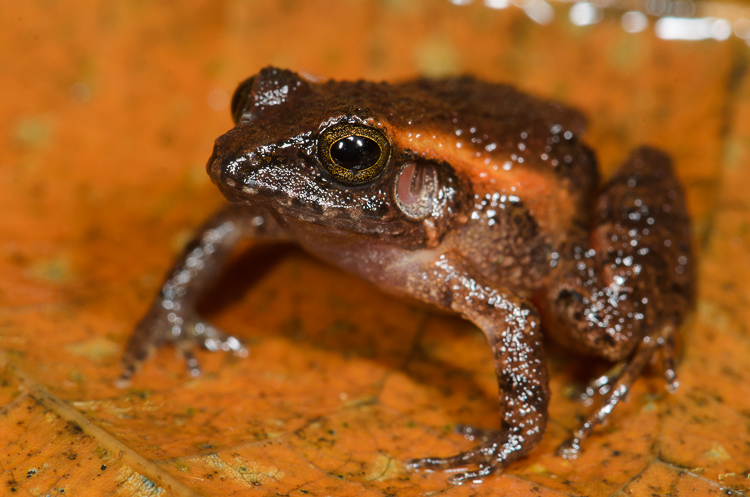 |
| Racing Striped Craugastor bransfordii |
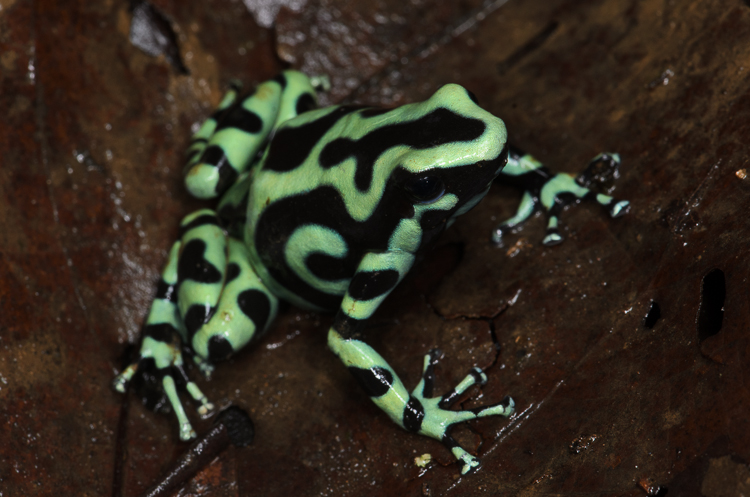 |
| Dendrobates auratus were more common than at La Selva. |
This night was our last at La Selva. Brian had another transect to search so we headed back out for more glass frogging.
A Smilisca was calling from a puddle in the lab clearing.
Carl and I took our time hiking out, while Brian decided to truck it ahead and start the survey. We figured we would have a better chance of turning up some snakes walking a bit more slowly. Well no snakes for us... We did hear some frogs calling, and make a mental note to return and try to locate one of them. Upon arriving at the transect, Brian asked if we saw the huge Fer-de-lance on the trail. No... Evidently he left a long piece of flagging tape that said Bothrops on it. No... We must have been looking up? The snake was stretched out, so I am pretty sure it moved off the trail. But we also missed the red flagging tape. I doubt we both stepped over a meter long snake, but who knows?
Brian had also already found a Sibon longifrenes too. Evidently our plan wasn't very successful (for the record, it had worked on other nights).
The glass frogs were again calling.
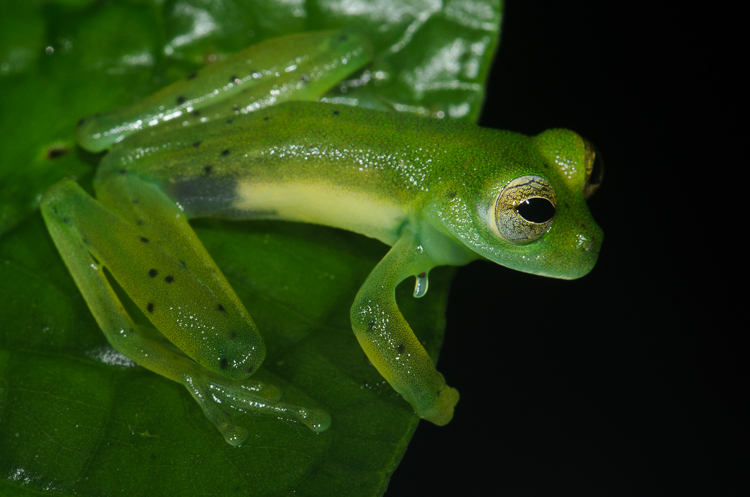 |
| Esparadana prosoblepon |
We searched the transect rather quickly, photographing less this night. After it was done we went back to search for the calling frogs from the trail.
After quite a bit of triangulating, we finally spotted the culprit. They were buried in deep.
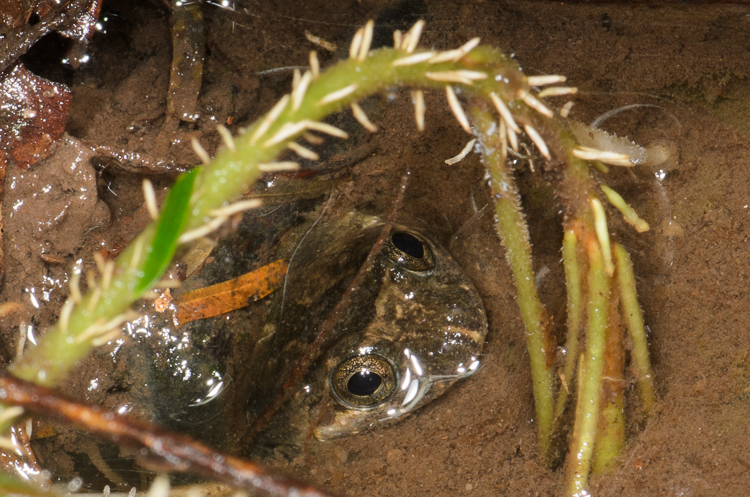 |
| Sabinal Frog Leptodactylus melanonotus |
Moving forward again, we were just reaching the branch of the glass frog stream and hiking along it when I noticed a flash of color on the trail. Hot dog!
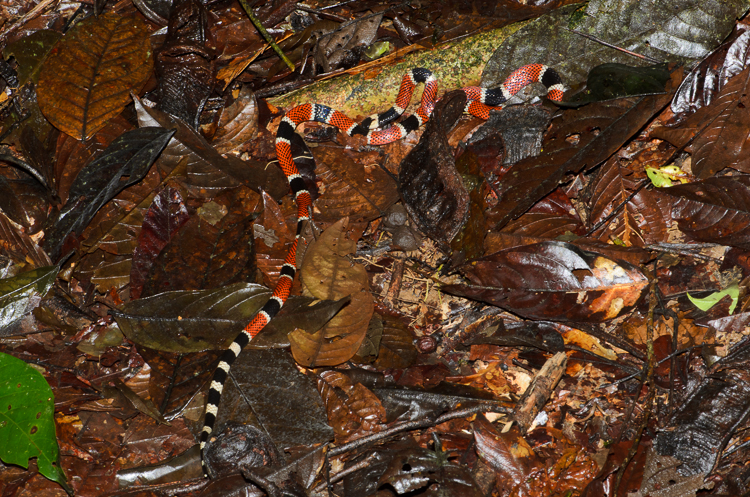 |
| Another Micrurus alleni |
In our limited experience, the
alleni seemed to like hunting along the smaller streams the glass frogs occupied. Brian was dreaming of the ugly
Hydromorphis concolor in the streams, but this was a nice consolation.
I photographed another
Craugastor bransfordii for Brian.
But honestly, the highlight of the night was a very large adult female
Craugastor megacephalus. This is a big head!
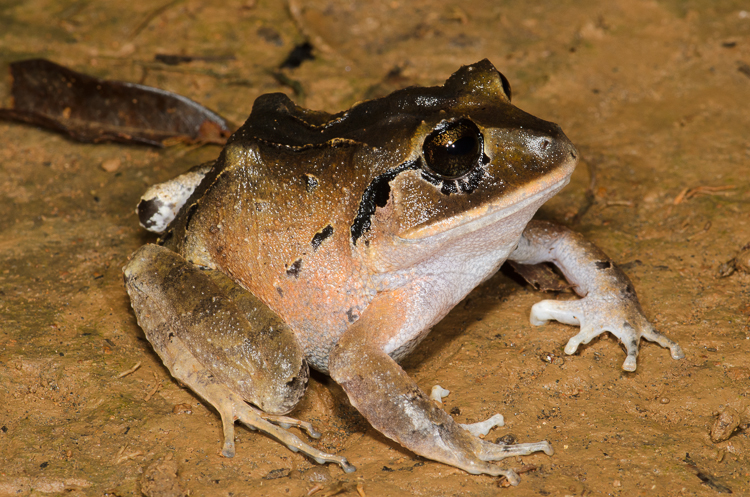 |
| female! |
 |
| And a look back at the male. |
Like most nights, after our hike we returned to the hangout spot near Brian's office for some good old biologist camaraderie. After a little while, someone asked if we saw the calcarifer hanging out in a plant in the lab clearing, about 20 yards away. No...
One of my favorite frogs. the Splendid Leaf Frog
Cruziohyla calcarifer.
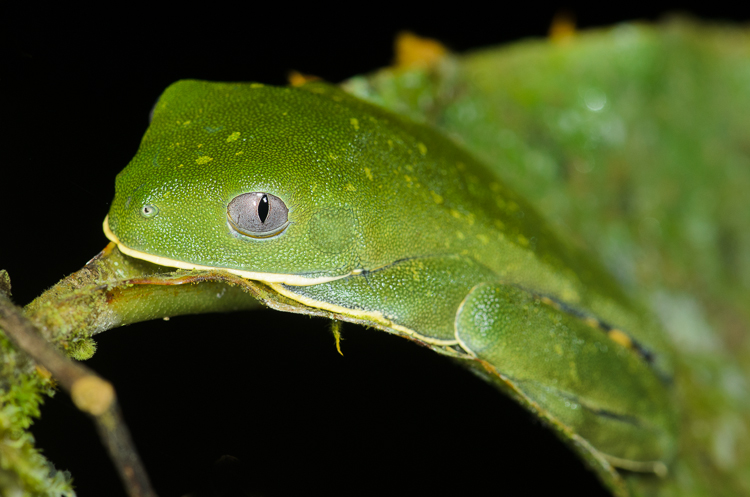 |
| What's so cool about this frog? |
The next day we were moving locations for our last night. I think Carl and I again slept in, and packed up our things. We went for a short late morning hike just before lunch with the goal to photograph the wood turtles in the river. We had seen a few, but hadn't dedicated time to trying to stealthily get close for pictures.
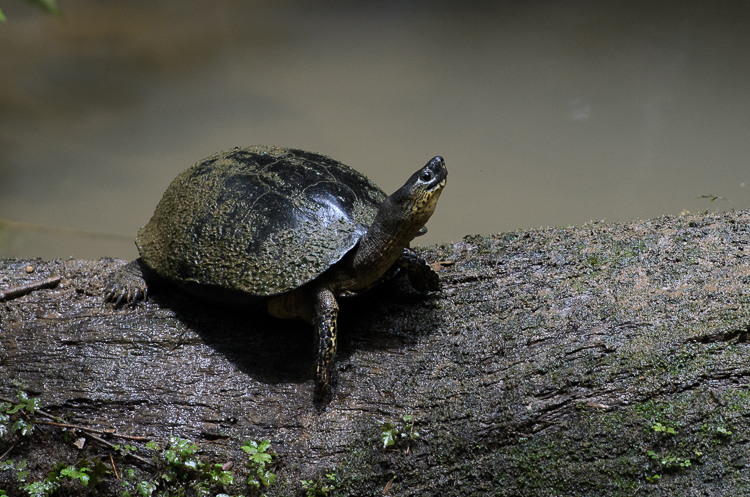 |
| Black River Turtle Rhinoclemmys funerea |
After lunch, I was talking with one of Brian's friends and he mentioned an "oropel" a little over a kilometer down one of the trails. Brian had headed to his room to get his bags, and the car was all packed... Carl and I readied our backpacks though and when Brian returned he was annoyed for a sec, but took the opportunity to get some work done in his office while we sprinted out. An oropel is the gold yellow morph of the eyelash viper, and one of Costa Rica's iconic herps. We really wanted to see one!
Luckily it was just where it had been spotted earlier that morning.
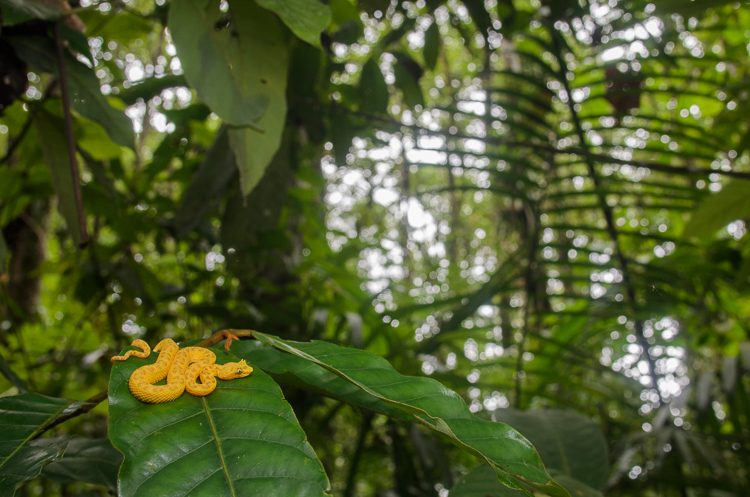 |
| golden Bothriechis schlegelii |
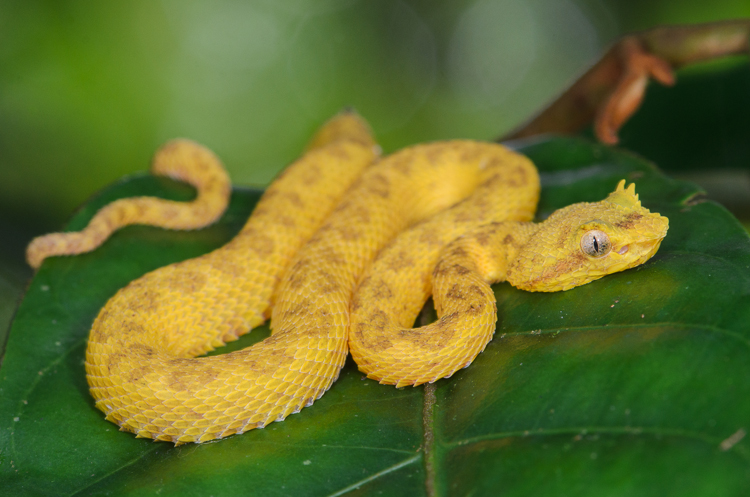 |
| Closer. |
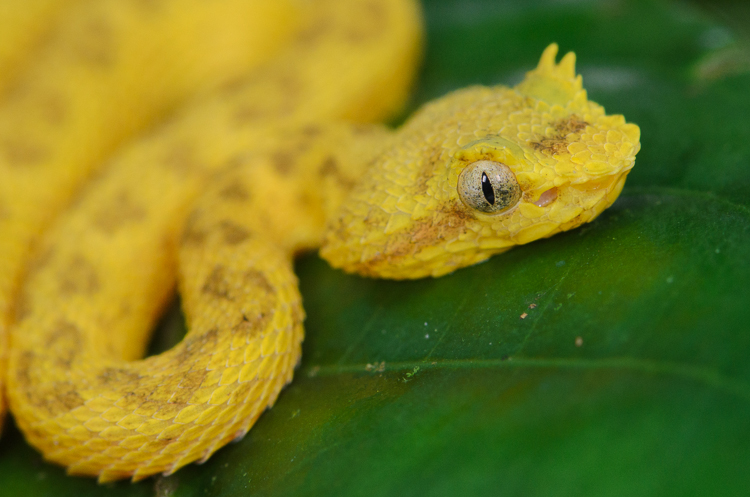 |
| And closer still. Super cool snake. It never moved a muscle. |
Carlos doing this thing.
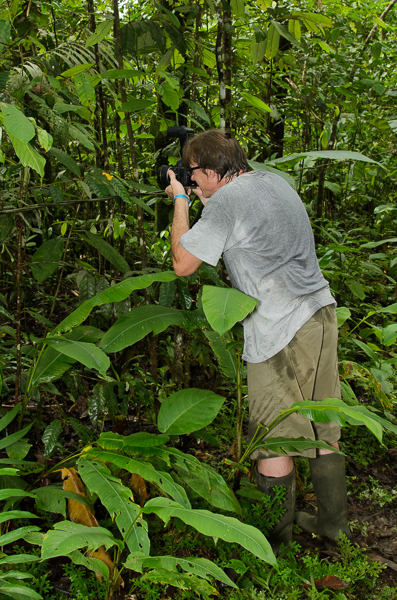 |
| We had started out clean and mostly showered. |
We got back fairly quickly as promised and got on the road. We had a couple hour drive from La Selva Biological Station to near Siquirres and the
Costa Rican Amphibian Research Center, owned and operated by Brian Kubicki. See part four, as we saw quite a lot there.
 |
| Goodbye La Selva, until next time. |
BH
You can see
Part 1,
Part 2,
Part 3 and
Part 4 here.




















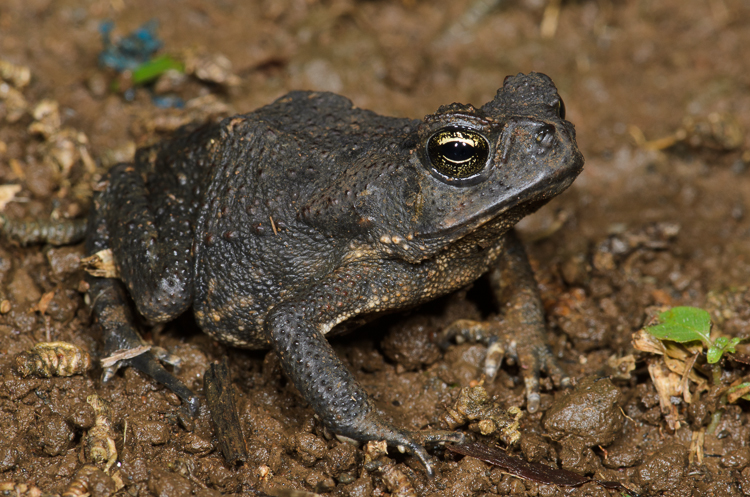
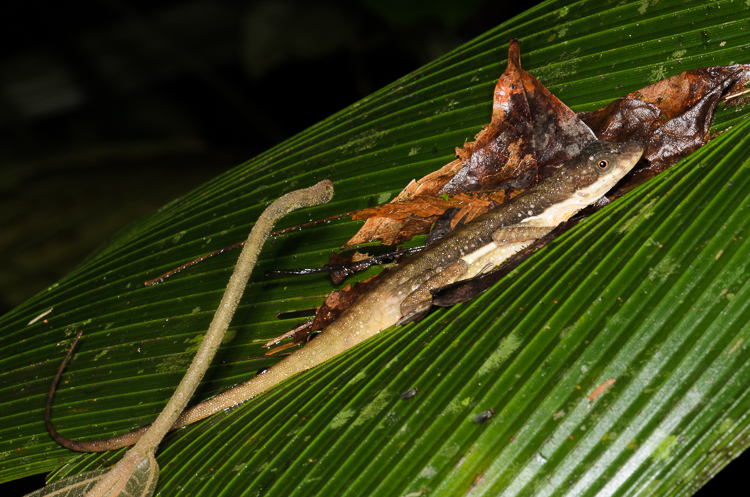
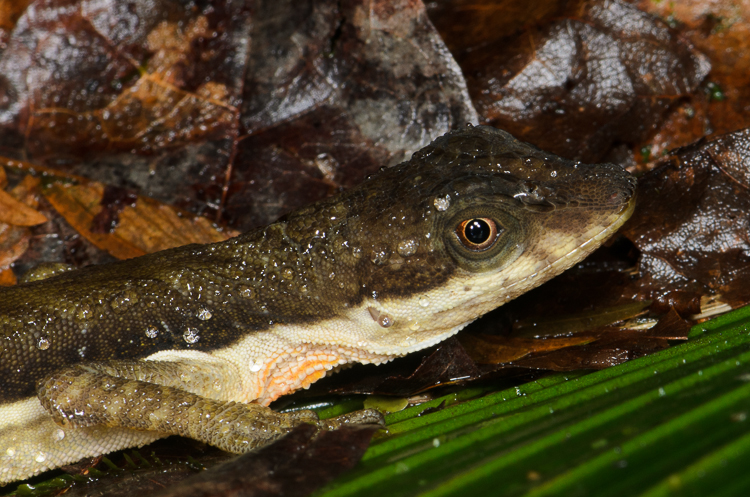
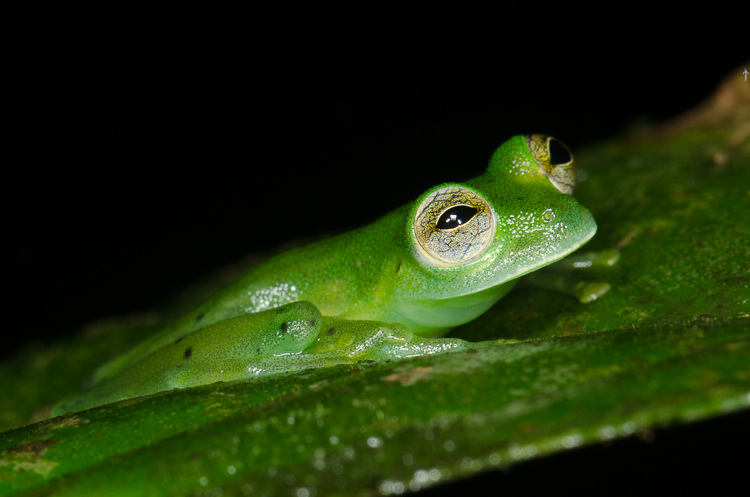
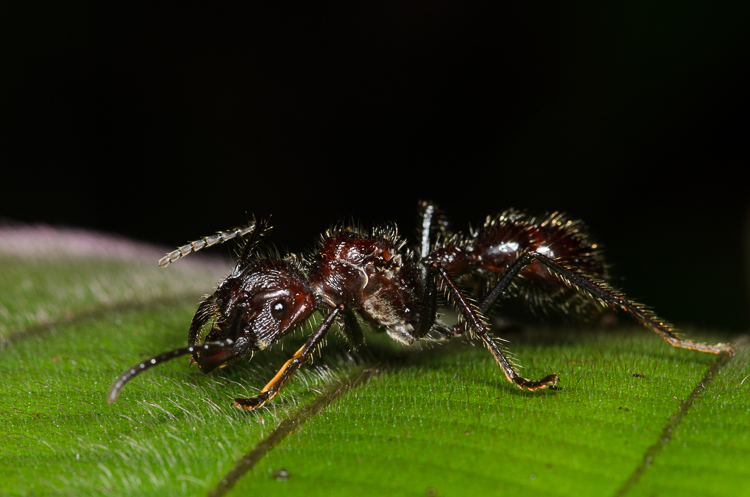
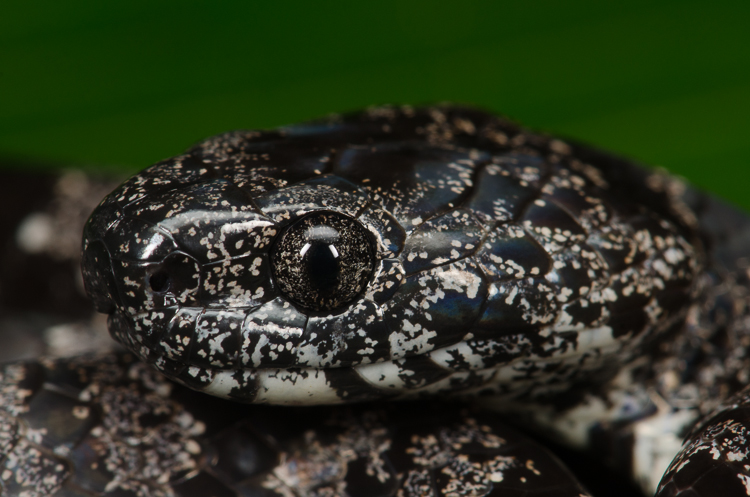
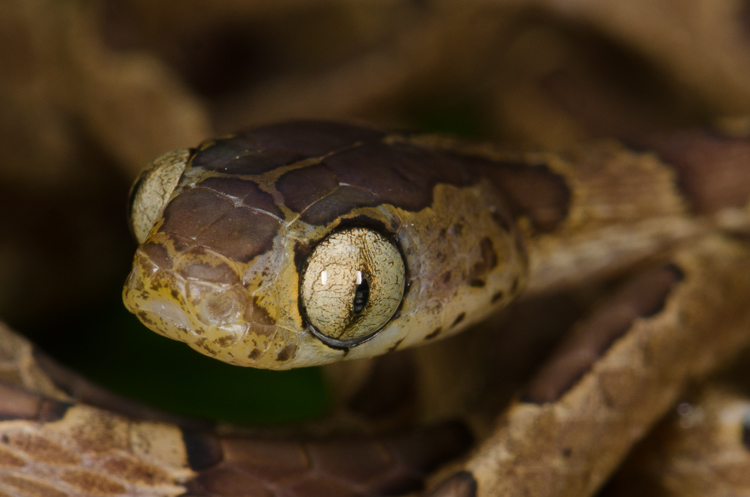
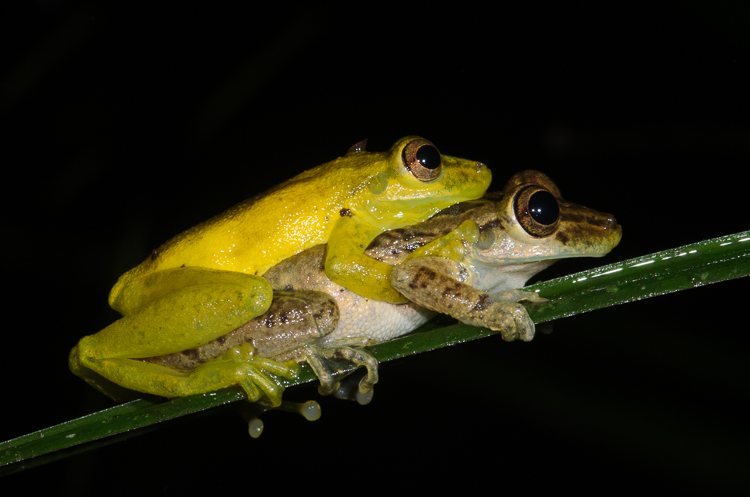
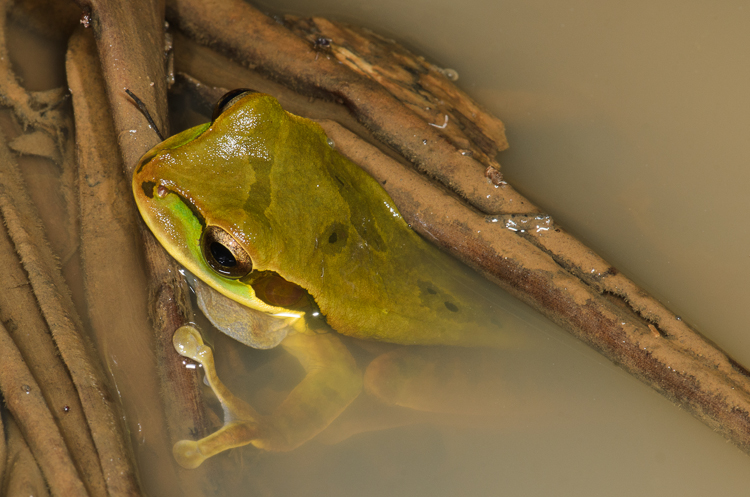
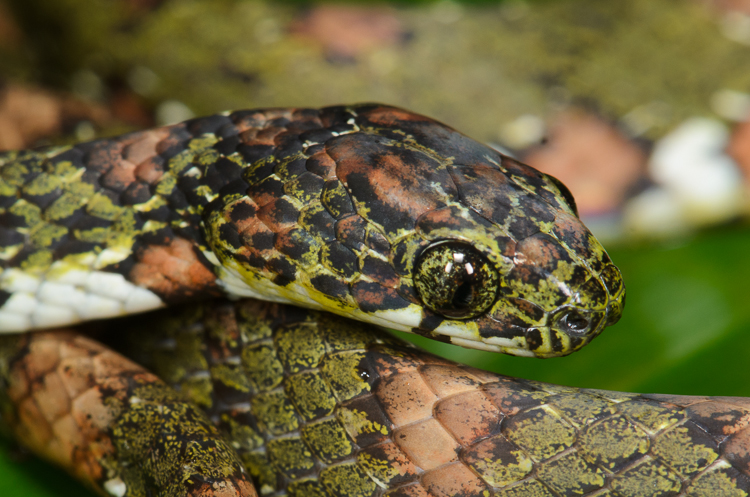
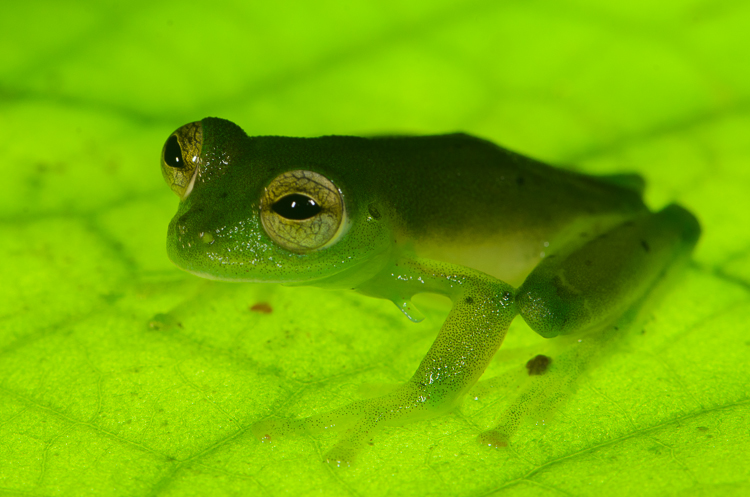
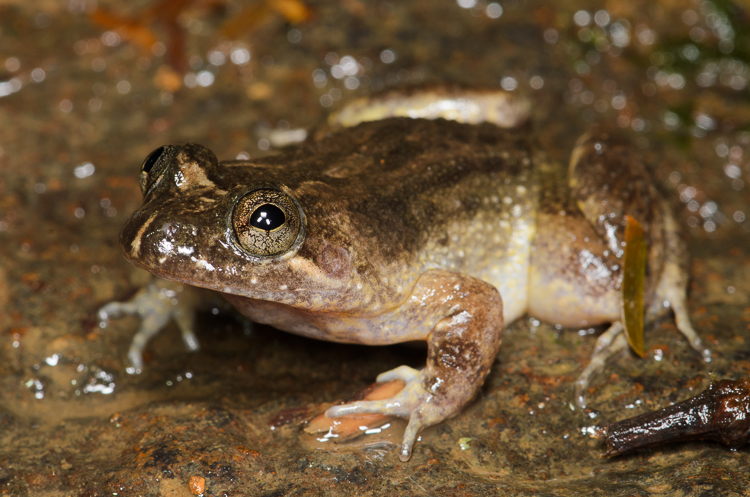
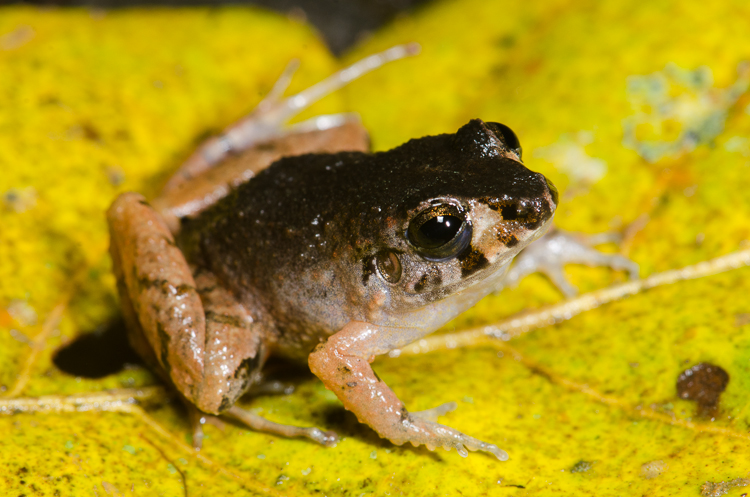
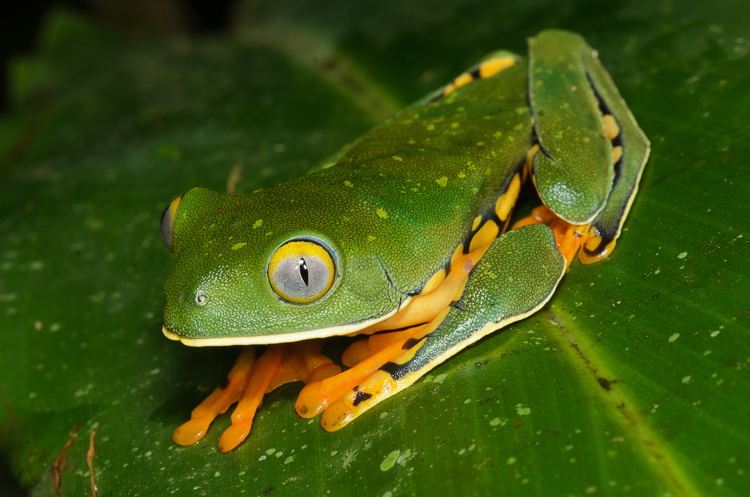
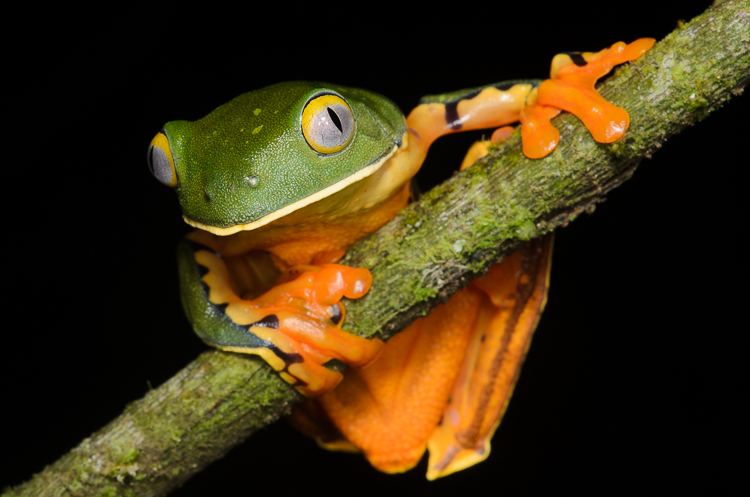

No comments:
Post a Comment